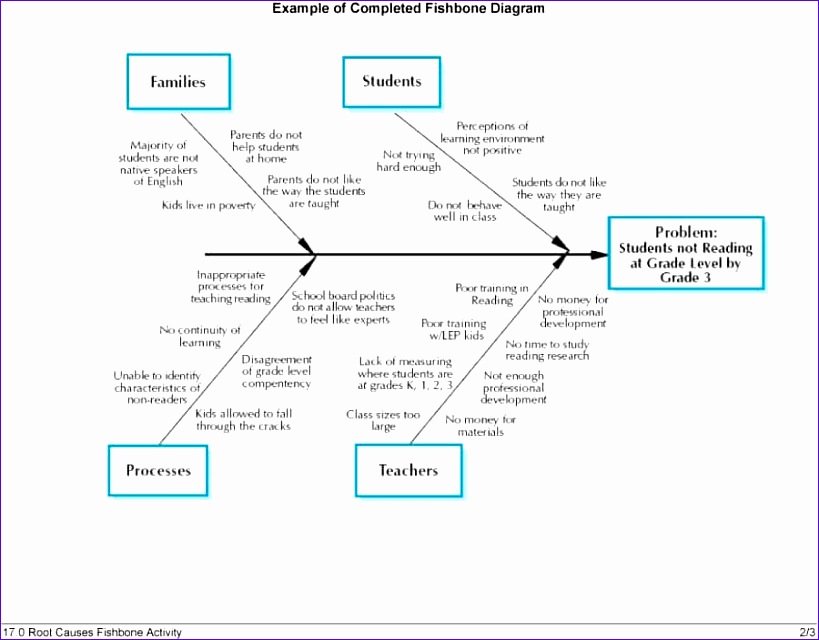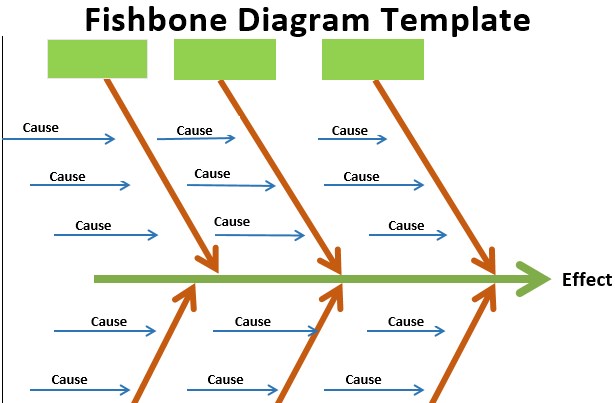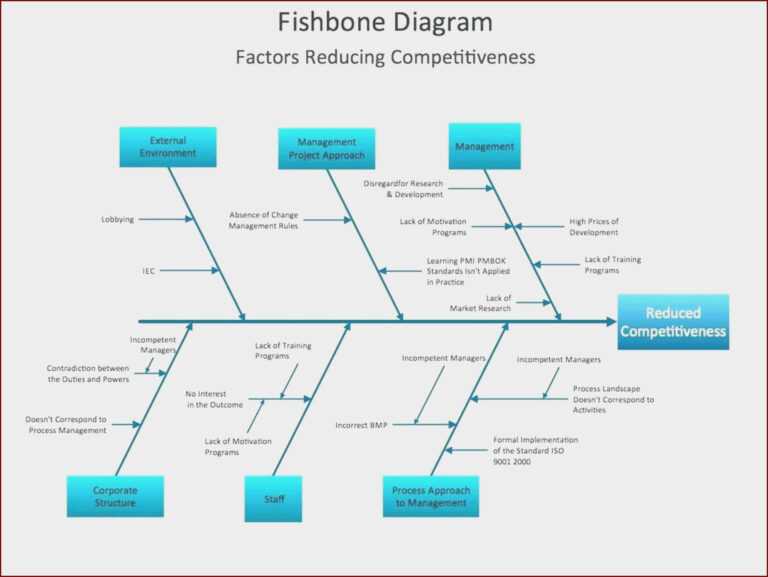

(Duration: 5:26) DOWNLOAD Click this to download the Ishikawa Diagram template file. To represent secondary causes contributing to primary causes, drag Secondary cause shapes onto the drawing page and snap the arrowheads to primary cause lines. The method of the 5-Whys Analysis meeting and the method of writing the Ishikawa Diagram are formatted and explained in 4 steps in an easy-to-understand manner on the Excel template. To represent major causes contributing to the categories, drag Primary cause shapes onto the drawing page and snap the arrowheads to category lines. To delete a category, select the shape and then press the DELETE key.įor each category shape on the drawing page, select the shape, and then type the name of the cause category. To add a category, drag a Category 1 or Category 2 shape onto the drawing page and position it so that the arrowhead is touching the spine. Select the spine (the horizontal arrow) on the drawing page, and then type text that describes the effect, problem, or objective.ĭetermine the number of cause categories that contribute to the effect, and then do one of the following: Go to Insert (main menu) > Shapes (in the Illustrations group). This template also provides a variety of shapes that represent primary and secondary causes that can be used to add even greater detail.Ĭlick File > New > Business, and then double-click Cause and Effect Diagram. Open Excel and save your file as ishikawa-diagram.xlsx. The Cause and Effect Diagram template opens a drawing page that already contains a spine shape (effect) and four category boxes (causes) to help start your drawing.

#Excel ishikawa diagram template generator
They are also called Ishikawa, fishbone, or characteristic diagrams. Fishbone Diagram Template Diagram Generator Excel Template Automatic Fishbone Diagram Maker Fishbone Infographic Related searches Other reviews from. You may also download our 6 Ms checklist to help you better log all possible causes under the appropriate categories.Cause and effect diagrams document all the factors that contribute to or affect a given situation: all the causes, that is, that lead to a certain effect. Just fill the text-boxes with the potential causes under the relevant categories.Īlthough this template uses the 6 Ms approach for labeling the categories, you may use any other approach and create your own branches that best suit your project. It comes with ready to fill text-boxes which simplify the process of adding the potential causes. For example, you may increase the number of potential causes per category or change their positions. This template is a Microsoft Excel spreadsheet that you can use and modify to meet your specific needs. It is also called an Ishikawa diagram, after its creator, Kaoru Ishikawa, as well as a herringbone diagram or cause-and-effect diagram. Select the spine (the horizontal arrow) on the drawing page, and then type text that describes the effect, problem, or objective. A fishbone diagram is a problem-solving approach that uses a fish-shaped diagram to model possible root causes of problems and troubleshoot possible solutions. Click File > New > Business, and then double-click Cause and Effect Diagram. Remember however that it does only allow to log the causes in a linear sequence, so you cannot enter two sub-causes under a parent cause. This template also provides a variety of shapes that represent primary and secondary causes that can be used to add even greater detail. This template comes in three different variations one that allows to add only the first level of potential causes, another that allows to add 2-levels of potential causes, and a third that allows to add 3-levels of potential causes.

Shaq, the famous basketball player, claimed himself The Big Aristotle, Superman and Diesel to name a few.

Not for any other reason than it has about five different names it goes by - Ishikawa, Herringbone, Cause-and-Effect and even Fishikawa. You can then plan and implement actions to address the key causes. The Fishbone Diagram is the Shaquille O’Neal of quality control tools. This Excel template provides five columns to create a simple, easy-to-read diagram. This fishbone diagram template will help you add the potential causes for a specific effect or problem. A SIPOC diagram provides a high-level, visual overview of a business process, which is helpful for identifying and summarizing all of the elements in a process improvement project from start to finish. It is also referred to as cause-and-effect diagram and Ishikawa diagram. A fishbone diagram is an effective tool to help presenting cause-and-effect in an easy and understandable format.


 0 kommentar(er)
0 kommentar(er)
